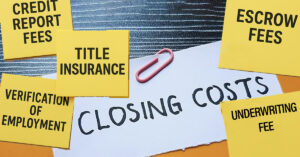Rocketing home prices led JPMorgan Chase CEO Jamie Dimon and Nobel Prize-winning economist Robert Shiller to declare this past spring that the U.S. housing market was showing signs of a bubble. This past April, CoreLogic reported that national home prices rose 13% year over year. This followed nearly a year of accelerating double-digit annual increases on top of already-record prices.
In some cities, the gains have been even more stunning. In Phoenix, for example, home prices jumped by 20% year over year in March 2021, according to the S&P CoreLogic Case-Shiller Indices. Prices in San Diego and Seattle rose by 19.1% and 18.3%, respectively.
Homes tend to appreciate at an average rate only slightly higher than inflation. The current market isn’t bouncing back from a collapse either. The recent spike followed years of strong price growth since 2012. As of March 2021, the Case-Shiller composite index was at a record level and 32% above its previous peak in July 2006, which was the height of a market that ultimately experienced a serious collapse.
So, should people be concerned? Joel Kan, associate vice president for economic and industry forecasting at the Mortgage Bankers Association (MBA), says he’s not worried about a bubble. He feels that the recent spike in prices is rooted in an interplay between unusually low interest rates, high buyer demand and a nationwide shortage of homes for sale.
“We have so much demand and not enough supply to go around, and that’s going to keep home prices from falling too much,” Kan says.
MBA is forecasting that home sales will remain robust and home-purchase origination volume will continue rising to reach nearly $1.8 trillion in 2023. But if there is a steep rise in mortgage rates and the economy stumbles, Kan says this would most likely take the heat out of the market rather than cause a collapse.
We have so much demand and not enough supply to go around, and that’s going to keep home prices from falling too much.
Joel Kan, Associate vice president of economic and industry forecasting, Mortgage Bankers Association
CoreLogic chief economist Frank Nothaft also says that today’s market is at little risk of folding. “We’ve got sub-3% mortgage rates and they’ve been sub-3% for an extended period of time,” Nothaft says. “That’s really fueled homebuyer activity, especially among first-time home-buyers who are typically millennials and Gen Xers, who can see this as an opportunity to trade up.”
One way to spot a problem is to look at history. The 2005-2006 housing market is widely regarded as a bubble. Nothaft says that environment was fueled by subprime mortgages with predatory terms, so-called “liar loans” and loose standards that produced millions of poorly under-written loans. Overbuilding also created a surplus of homes in many cities and a climate in which prices could fall quickly.
Today’s market, however, has opposite forces in play. There’s a short-age of homes for sale in most cities, strong demand from creditworthy borrowers and almost no subprime mortgage market to speak of. “What we do have today is dirt-cheap mortgage rates, but it’s not easy credit,” Nothaft says.
This is not to say that there aren’t problems. Affordability is an issue, Nothaft says, and if mortgage rates rise significantly, first-time buyers could be further priced out of the market. But even under worst-case projections for the U.S. economy, he says there likely won’t be a bust that crushes home values.
“We would see a weakening of homebuying activity that could translate into slowing price growth, and the slowing of price growth could translate into price declines in some neighborhoods,” Nothaft says.
Michael O’Brien, vice president of correspondent sales at Carrington Correspondent, says that many lenders are worried about the mortgage market but not because of a forming bubble that will leave financial institutions and federal agencies holding risky mortgages on homes with deeply depressed values. O’Brien believes the market is on solid footing and the uncertainty is tied to the ending of the rate-driven boom in refinancing. Mortgage lenders will need to shift operations to compete for home-purchase mortgage business in a highly competitive marketplace with declining profits, he says.
“Mortgage rates have been historically low for a long period of time now,“ O’Brien says. “So, you know, they’ve had it pretty easy, and mortgage lenders are going to realize that they need to expand the type of borrowers that they may lend to, and the type of programs that they’re originating (through).”
In competing for business, however, O’Brien thinks that lenders aren’t likely to repeat the mistakes of 2005-2006 by reaching too deeply into subprime territory. For one thing, he says, even if lenders do expand their offerings beyond the guidelines of qualified mortgages, they are still ensuring that borrowers have the ability to repay the loans.
“There’s a lot of guardrails and safeguards in place now to handle some of those issues or potential concern,” O’Brien says. ●
Author
-

Victor Whitman is a contributing writer for Scotsman Guide and a former editor of the publication’s commercial magazine.
View all posts






